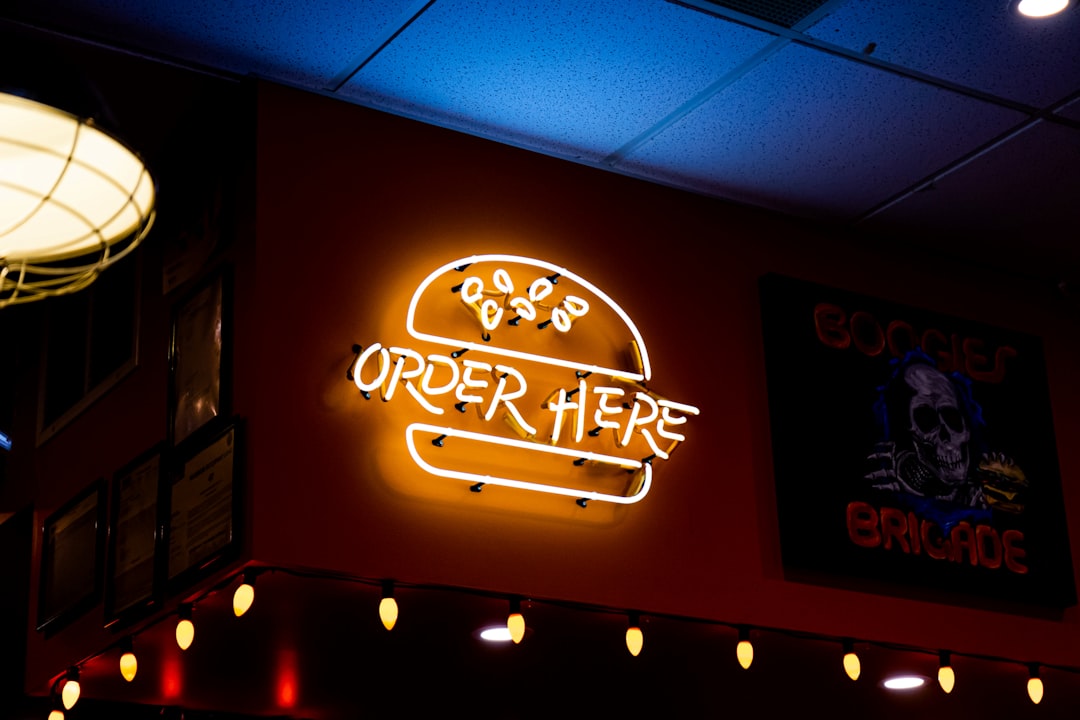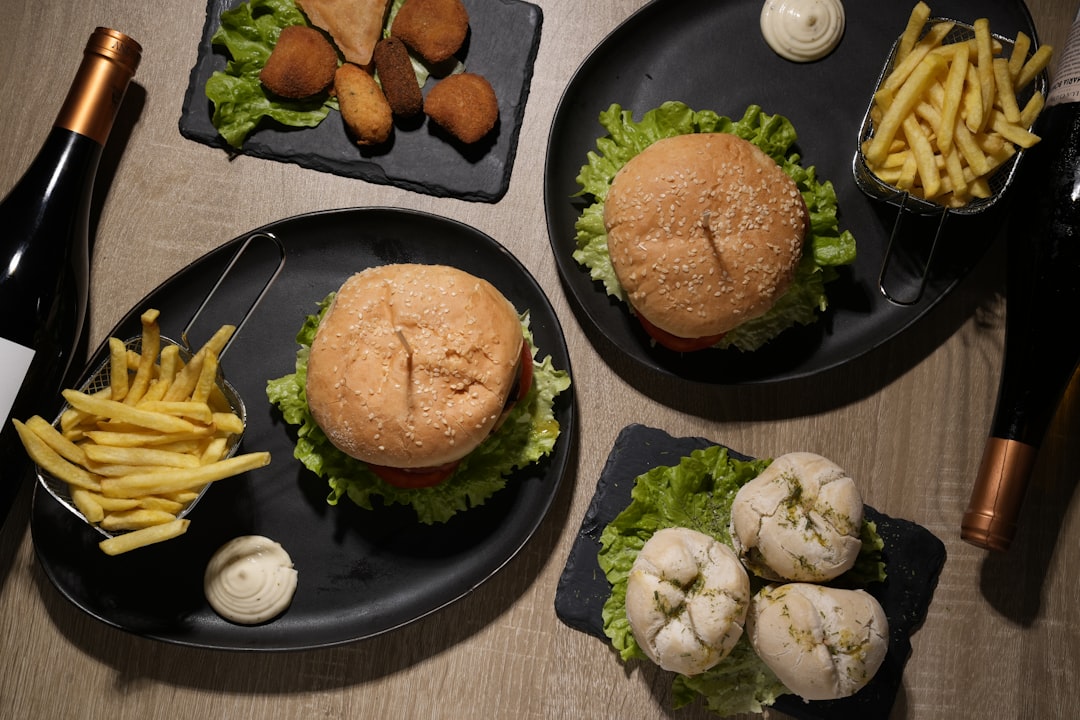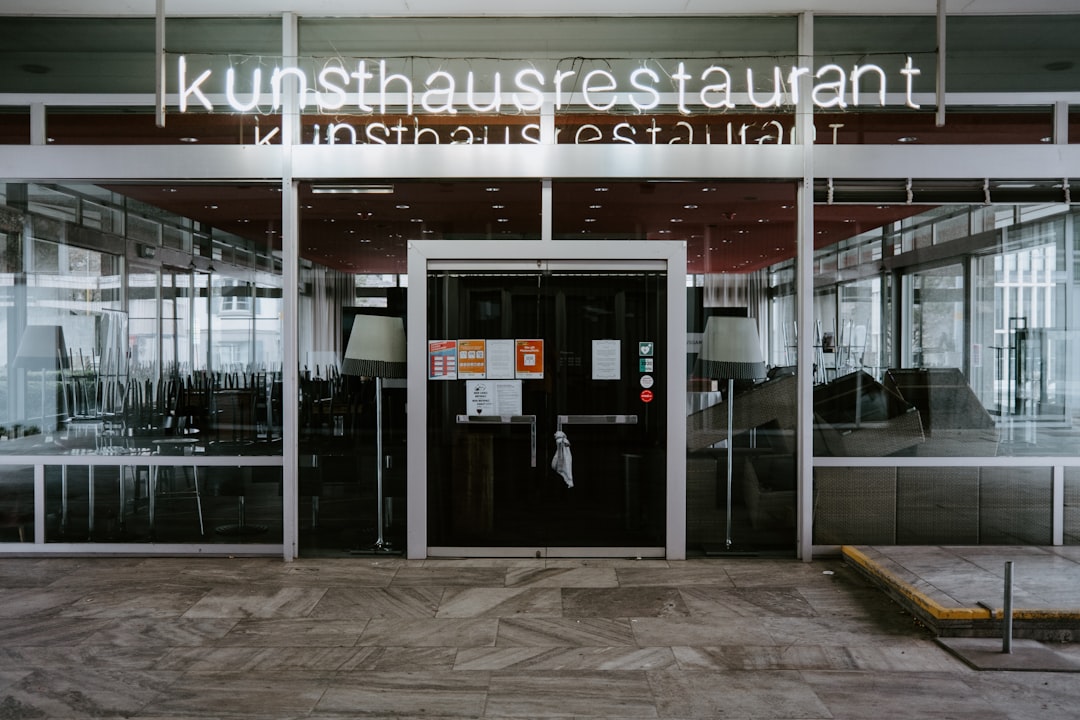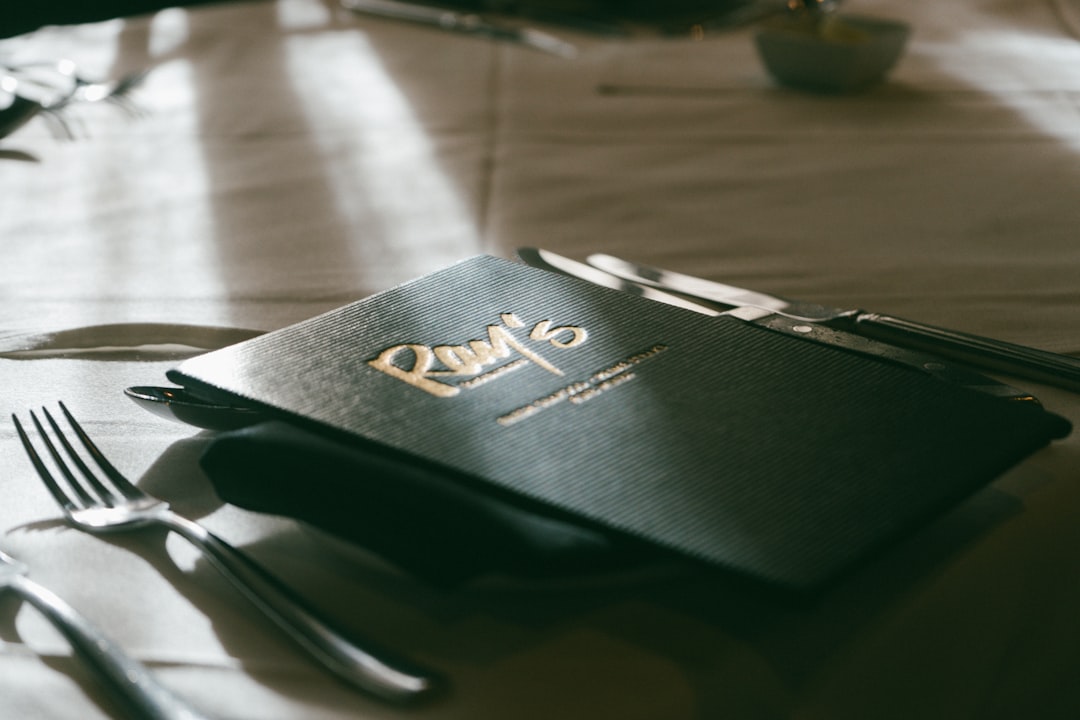

Engage prospects with a scan and streamline customer engagement with FREE QR code marketing tools by Sona – no strings attached!
Create a Free QR CodeFree consultation

No commitment

Engage prospects with a scan and streamline customer engagement with FREE QR code marketing tools by Sona – no strings attached!
Create a Free QR CodeFree consultation

No commitment
QR codes have evolved from a novelty into a strategic powerhouse, bridging offline engagement with online action for takeout food restaurants. Many operators struggle to capture valuable customer intent at physical touchpoints, leading to missed opportunities and inefficiencies in traditional workflows. As customer demand for speed, convenience, and safety continues to shape the competitive landscape, industry trends reinforce that QR codes offer a simple yet transformative way to facilitate contactless ordering, streamline menu access, and boost operational efficiency, all without requiring an app download or a complex technical setup.
For takeout food restaurants, streamlining the ordering process is crucial for increasing throughput and reducing wait times, and for ensuring consistent, personalized guest experiences that prevent customer frustration and churn. It is easy for high-value prospects to slip through the cracks when analog methods make it difficult to track every touchpoint. Whether your customers are dining in, ordering ahead, or picking up curbside, QR codes provide the shortest and most measurable route from signage and packaging to digital actions like placing an order or earning rewards. Modern solutions like Sona QR enable operators to capture and segment every scan as a new piece of actionable insight, deepening guest engagement and opening opportunities for targeted follow-ups.
This article guides growth marketers, restaurant operators, and business decision-makers through best practices and innovative strategies for deploying QR codes in takeout environments, helping you unlock new revenue streams, track customer behavior at the account level, and build strategies that minimize waste and maximize the value of every guest interaction.

QR codes bridge the gap between physical touchpoints and digital outcomes, making it easier than ever to achieve speed, safety, and convenience in takeout food restaurants. Instead of directing customers to long URLs or phone-based ordering lines, a simple scan transports guests to your digital menu, a cart preloaded with specials, or a checkout page that supports their preferred payment method.
Done well, QR-driven ordering removes friction, reduces staff load, and makes outcomes measurable. This is especially important in high-volume, high-velocity settings where seconds matter and order accuracy is paramount. When operators transform static surfaces into actionable moments, they unlock consistent experiences across dine-in, takeout, and curbside pickup while collecting data that fuels future engagement.
Here is how to do it effectively:
Outdated processes like printed menus that go stale, phone-in orders that tie up staff, and paper punch cards that are hard to reconcile all weaken visibility into guest behavior. A QR-first approach replaces these analog steps with dynamic digital flows that are easy to update, easy to scale, and easy to measure.
Innovative solutions can connect each scan to deeper profiles and campaign-level analytics. This provides a foundation for quick wins, like faster ordering and higher attachment rates, and long-term growth, like better segmentation, improved loyalty, and smarter lifetime value strategies.

Guests expect ordering to be fast and intuitive, and takeout businesses thrive when they reduce friction. QR codes meet both needs by creating a direct link from a real-world trigger to a digital outcome. A printed menu or a counter sign suddenly becomes an entry point to a dynamic, measurable ordering experience that customers can execute on their own devices. See menu best practices for optimal placement.
Beyond speed, QR codes create operational consistency. They keep menus updated without reprinting, ensure pricing changes are reflected immediately, and connect every promotional asset to a traceable outcome. For operators balancing multiple locations, time-of-day menus, and seasonal items, this flexibility can prevent costly errors and missed sales.
For takeout restaurants, this matters across common materials, including bag stuffers, window decals, counter toppers, and direct mail. Each physical touchpoint becomes measurable, which makes budgets smarter and growth more predictable.

QR codes are versatile enough to support nearly any goal in a takeout setting. Choosing the right format and destination ensures the scan leads to the right next step. Operators can mix formats across placements, then unify the analytics to see what performs best by context.
Dynamic QR codes are particularly valuable because they allow operators to change the destination without reprinting. That flexibility reduces waste and lets you iterate on promotions or routing logic based on live performance. Static codes still have a place for permanent resources, such as a link to a PDF of allergen information or a one-time promotion.
Dynamic formats shine when menus, offers, or hours change frequently. Using a centralized platform to manage all codes ensures analytics stay unified across different formats and placements, making it easier to spot high-value patterns and optimize.

The best QR placements align with real-world traffic and behavior. In takeout, that often means intercepting customers at the counter, on the sidewalk, in their cars, or at home after the meal. Start with your highest-volume touchpoints, then expand into niche placements that address overlooked moments in the journey. See drive sales with QR for real examples.
Think of each physical asset as a gateway to a specific digital task. A counter sign should launch the main menu. A bag insert should drive feedback or loyalty. A window decal by the curbside pickup zone should link to reorder or a time-boxed offer. Matching intent to placement is what drives higher scan rates and meaningful conversions.
When placements are paired with segmentation and follow-up, takeout brands gain tighter targeting and better remarketing. Each scan becomes an actionable signal that can inform promotions, staffing, and menu decisions.

QR codes can underpin a range of operational and marketing innovations that directly impact throughput, guest satisfaction, and revenue. Focus on use cases that reduce friction for your guests and add visibility for your team, then measure impact to refine over time.
Start with a few high-impact applications that you can test quickly, then expand to a more comprehensive QR strategy as you gather wins and insights. The key is to match every use case to a clear outcome and to track the full path from scan to order or action.
Each of these use cases creates a point of measurable engagement. With dynamic QR codes and a centralized platform, you can iterate on destinations and CTAs without reprinting as you learn what resonates with your guests.
Every QR code scan is an intent signal. It reveals what a guest wanted at a specific moment, which placement they engaged with, and which device they used. By deploying multiple codes across distinct touchpoints, you can automatically segment audiences and tailor follow-ups that fit the context of their scan. Sona is an AI-powered marketing platform that turns first-party data into revenue through automated attribution, data activation, and workflow orchestration.
Segmentation increases relevance and saves budget. Rather than blasting generic offers, you can nurture groups based on their demonstrated interests, timing, and location. Over time, this builds a healthier retention engine that balances immediate transactions with long-term loyalty. For execution, see intent-driven retargeting.
With these practices, takeout operators can nurture guests with precision. Scans from bag inserts can receive a “thanks and save” offer 48 hours later. Scans from curbside signage can be invited to reorder around the same daypart the following week. The result is a system that respects the guest’s context and makes each message feel timely and useful.
QR codes connect your offline presence to your digital ecosystem. They ensure that print efforts, in-store signage, and packaging are not isolated, but instead feed measurable engagement into your CRM and analytics. This alignment improves customer experience and makes campaign optimization much easier. Operators report mixed guest perceptions in QR adoption stories that can inform rollout and messaging.
For multi-location restaurants, QR codes also create consistency. They allow you to control destinations centrally, keep messaging aligned, and update offers instantly across stores. As a result, you can run national campaigns with local nuance while maintaining a unified view of performance.
Centralized analytics and QR platforms let you manage all of this in one place. You can monitor performance, spot patterns by channel, and sync scan data with your CRM so follow-ups happen automatically and consistently.
Launching a QR campaign is straightforward when you break it into a few structured steps. Treat each step as a lever for better performance, from the clarity of your goal to the cleanliness of your analytics. The objective is not just to get scans, but to turn scans into measurable outcomes like orders, opt-ins, and reviews.
Before you begin, align your team on the specific problem you want to solve. Are you trying to shrink lines at lunch, capture more post-meal feedback, or convert curbside pickups into loyalty members? Clear goals will determine your QR destinations, CTAs, and placements.
Clarify the single outcome you need most, then pick the use case that fits. For takeout operators, common goals include driving digital orders during peak periods, promoting new menu items, capturing email or SMS opt-ins for loyalty, and collecting feedback to improve service quality.
Choose static for permanent, unchanging destinations and dynamic for anything that needs tracking, editing, or frequent optimization. Most restaurant campaigns benefit from dynamic codes because agility and measurement are key to success. Learn about dynamic QR codes to support editable, trackable campaigns.
A scan happens only when guests notice and trust the code. Design and placement matter as much as the destination. Aim for high contrast, adequate white space, and a clear CTA that tells guests what they get from scanning.
Roll out to the touchpoints most likely to drive your goal. For ordering, prioritize counter signage, menu boards, and window decals. For retention, prioritize bag inserts, receipts, and direct mail.
Use analytics to learn, then iterate quickly. Tracking is what turns QR codes from a convenience into a growth engine. Make scan-to-order, scan-to-sign-up, or scan-to-feedback your core metrics and optimize for them.
QR codes generate rich engagement data, but without proper attribution you cannot tie that engagement to orders or revenue. Many restaurants stop at measuring scan volume, which misses the bigger picture. The power of QR lies in knowing which placements and messages reliably produce conversions and repeat visits. For frameworks, see Sona’s offline attribution guide.
A robust measurement setup links physical assets to digital outcomes. It captures context for each scan, pushes data to your CRM or POS, and enables you to compare performance across campaigns and locations. With that foundation, you can double down on what works and fix or retire what does not.
With a centralized platform, you can manage codes, monitor performance, and build dashboards that show scan-to-order progression. That clarity empowers operators to invest confidently in QR as a core growth channel rather than a one-off tactic.
Once your initial campaigns show traction, expand deliberately. Focus on a small set of improvements that compound over time. Align each new QR placement with a specific customer moment and make sure the destination is built for fast action on a mobile device.
Think creatively about all the surfaces and moments your brand touches. If guests are waiting at the counter, give them a reason to scan for a quick special. If they are at home eating, give them a reason to scan for a reward or reorder link. Timeliness, clarity, and value drive higher scan rates and better outcomes.
Commit to a cycle of testing and refinement. The more you use QR codes as strategic connectors, the stronger your customer profiles and the more efficient your marketing becomes.
Early adopters in the takeout category are already proving the impact of QR-driven ordering and engagement. Their experiences show that modest changes in placement, CTA, and follow-up can produce meaningful gains in speed, satisfaction, and lifetime value. Consider these scenarios as prompts to design your own experiments.
Each example underscores the principle that QR codes excel when they are specific and contextual. A code on a bag should ask for feedback or a reorder, not send diners to a generic homepage. A code on a window decal should offer a fast path to ordering, not a long story about the brand. Clear intent creates clear results.
Use these examples as starting points. Adapt the placements and messages to your brand voice and store layout, and remember to measure what matters: scan-to-order, scan-to-sign-up, and scan-to-feedback.
Successful QR programs are rarely accidental. They come from thoughtful design, clear goals, reliable measurement, and steady iteration. The following tips will help you capture more value from every scan and avoid the traps that waste budget or erode guest trust.
Pitfalls usually trace back to three issues: unclear CTAs, poor scannability, and lack of follow-through. If guests do not know what they get, cannot scan easily, or do not receive a useful next step, your campaign will underperform regardless of placement.
QR codes represent an integrated, measurable restaurant marketing strategy. For takeout food operators, they transform static surfaces into interactive data sources, closing the loop on engagement and enabling staff to spend more time serving and less time on phone calls or manual data collection.
By making every scan a potential step in a well-designed journey, you reduce friction while surfacing new opportunities for upsell, cross-sell, and retention. With the right analytics and integrations, operators can connect offline interactions to digital conversions, refine campaigns in real time, and attribute every effort to financial outcomes, not just activity. In a market where speed and personalization are essential, QR technology positions takeout restaurants to meet and exceed customer expectations. Start creating QR codes for free.
QR codes have revolutionized takeout food restaurants by streamlining the ordering process and enhancing customer satisfaction. By enabling quick, contactless ordering, they reduce wait times and errors, turning every order into a seamless, efficient experience that keeps customers coming back. Beyond speeding up orders, QR codes also open doors to acquiring new customers and gathering valuable insights into ordering patterns and preferences.
Imagine knowing exactly which menu items drive repeat business or which promotions boost online orders—all in real time. With Sona QR, you can create dynamic, trackable QR codes that update instantly without reprinting, connect every scan to revenue, and optimize your campaigns for maximum impact. No more guesswork, just smarter operations and happier customers.
Start for free with Sona QR today and transform your takeout service into a fast, data-driven growth engine that keeps your restaurant ahead of the curve.
QR codes improve the takeout experience by enabling faster, contactless ordering, reducing wait times, streamlining menu access, and providing consistent, personalized guest interactions without needing an app.
Benefits include dynamic menu updates without reprinting, reduced phone calls and queues, operational consistency, real-time pricing accuracy, measurable customer engagement, and cost-effective campaign flexibility.
Implement QR code ordering by choosing relevant use cases, deploying codes at high-impact touchpoints like counters and packaging, designing clear CTAs, using dynamic QR codes for tracking, testing scannability, and analyzing scan-to-order data to optimize performance.
Creative uses include loyalty sign-ups on takeout bags, customer feedback surveys on receipts, catering and group order forms on signage, nutritional information access, social media contests, and event-specific ordering links.
Restaurants can increase retention by using QR codes to invite customers to join loyalty programs, send timely follow-up offers based on scan context, collect feedback for service improvements, and segment audiences for targeted marketing and personalized promotions.
Use Sona QR's trackable codes to improve customer acquisition and engagement today.
Create Your FREE Trackable QR Code in SecondsJoin results-focused teams combining Sona Platform automation with advanced Google Ads strategies to scale lead generation

Connect your existing CRM

Free Account Enrichment

No setup fees
No commitment required

Free consultation

Get a custom Google Ads roadmap for your business






Launch campaigns that generate qualified leads in 30 days or less.
